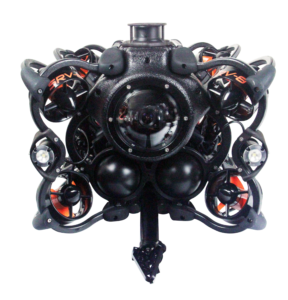Underwater acoustics is the science of utilizing sound waves underwater as a method of navigating, communicating or detection.
How does underwater acoustic work in the water?
The most common way to generate an underwater acoustic signal is by creating an electronic signal that is then converted into mechanical energy. The mechanical energy is then transmitted in to the water as a sound wave, which acts very much like the waves created by throwing a small pebble into a quiet pond.
How fast does an acoustic signal travel underwater?
Sound underwater travels at the speed of 5000 ft (1500m) per second which is about five times as fast as it travels in air.
What affects the acoustic signal underwater?
Acoustic signals travel in direct paths over limited distances and work on the concept called “line-of-sight.” This means that an underwater acoustic signal will be best received when the acoustic receiver is in the direct “line-of-sight” of the pinger. Acoustic signals can be blocked by large natural or man-made objects much as a bridge or hill can block your favorite radio station.
How does water temperature acoustic signal underwater?
Sound waves in water will be reflected or refracted (bent) by thermoclines. A thermocline is the boundary between layers of water with different temperatures or densities. The lower layer will always be denser (heavier) and since denser water is colder, it will have a lower temperature than the upper layer. The denser the medium, the faster acoustic signal will travel through it. Therefore, the colder the water, the faster sound waves will move through it. A thermocline acts like a fine mesh screen. Most signals will be reflected, but some will get through yet get distorted due to the change in speed. When transmitting through one or even several thermoclines, it is best to make the acoustic signal as strong as possible in order to compensate for losses.
How does frequency affect the distance the acoustic signal travels?
Most underwater acoustic pingers operate in the frequency range of 10 KHz to 45 KHz. As a rule, the lower the frequency of an underwater acoustic signal, the farther it will travel through water. For example, a 12 KHz acoustic signal will travel farther than a 37KHz signal if both are transmitted with the same amount of power.
What is acoustic power and how does it affect in my choice of pingers?
As a rule, the higher the power of the acoustic signal, the greater the distance it will travel through the water. The strength of an underwater acoustic signal is measured in “watts” or decibels, also refereed to as dB’s When measuring in decibels or dB’s, a reference is required to provide a standard. Typically, a reference of l uPa (micro Pascal) at a distance of 1 yard is used.
What is a transducer?
Acoustic signal is created by a “transducer” which is a technical term for an underwater antenna. The transducer converts electrical energy into mechanical energy (vibrations) which in turn create the acoustic signal. A transducer, depending upon the application, can transmit or receive a acoustic signal. When it receives a signal it is called a hydrophone. The heart of the transducer is a piezo-electric ceramic element, usually in the shape of a tube, which is then encapsulated in polyurethane. Applying an electric signal (voltage) to this piezo-electric ceramic element will cause it to alternately contract and expand thereby creating a pressure or sound wave. Thus a sound wave or acoustic signal is transmitted through the water.
What affects the operational life of a pinger?
Power consumption is determined by the efficiency of the electronics and how powerful a signal will need to be created. The stronger the signal, the higher the power consumption. This is an important factor since most underwater electronics are powered by batteries and therefore offer a limited operating life.
What type of material is used on underwater pingers?
Since ocean water contains salt, minerals and chemicals that will cause many kinds of materials to corrode, we have to carefully consider the material we want to use. The best type of material to use is plastics since they are non- corrosive; however, most plastics have limits with regard to holding up under extreme pressure and can therefore only be used for applications in shallower depths. Besides plastics, the best materials to use are marine grade stainless steel or anodized treated aluminum, which makes it resistant to corrosion.
How does the water switch work on an acoustic pinger?
When the two water switch contacts get wet, the pinger is activated and will continue to send its signal as long as it is wet. Once it is removed from the water and the water switch contacts become dry, the pinger stops.
What do I need to consider in selection an acoustic pinger?
How long is the pinger being deploying underwater helps to determine how much operational life you need. How deep in the water are you planning to place the pinger also will determine what the depth rating of the pinger should be.


